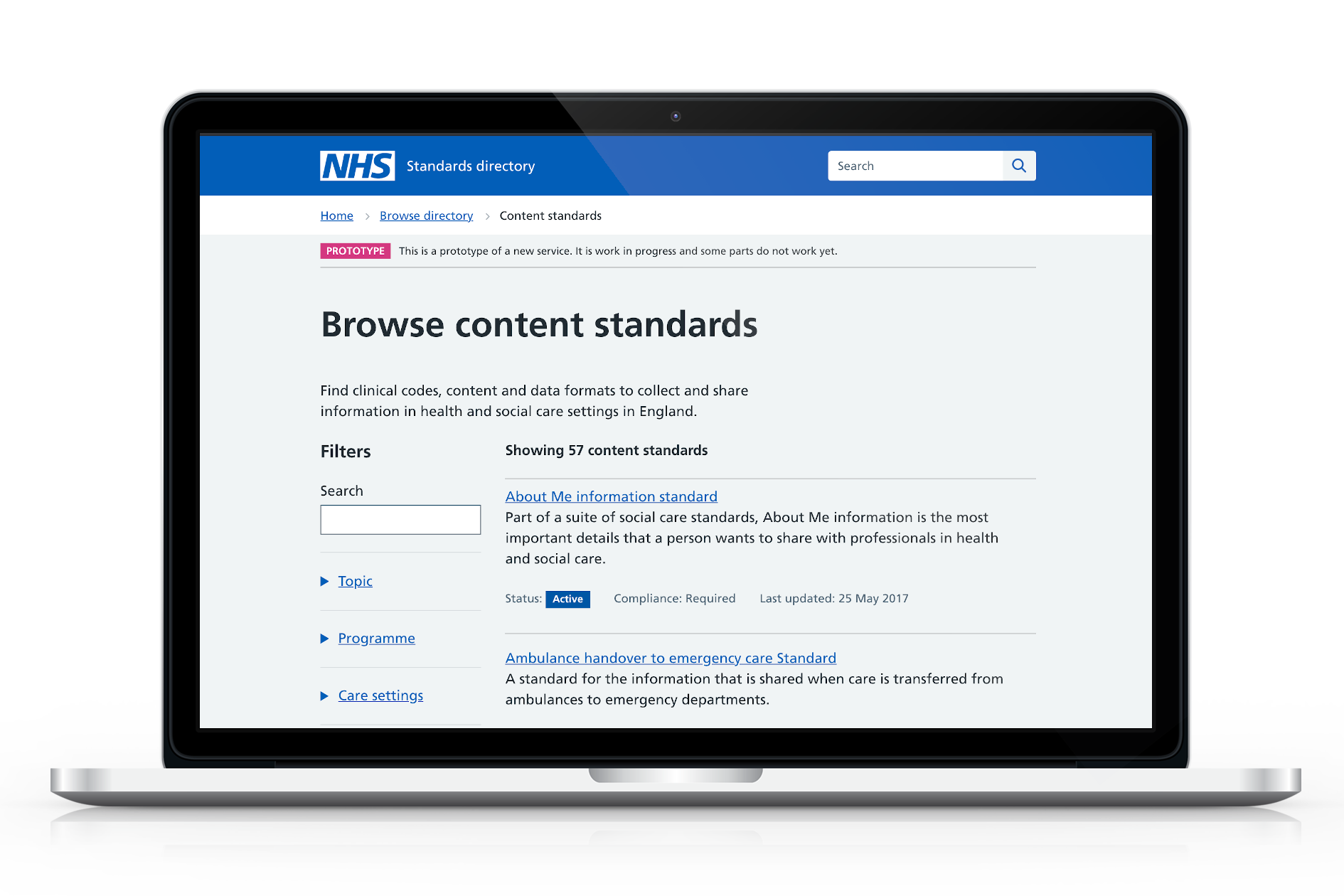Research suggested a new digital service could support health data interoperability - joining up IT systems so they can exchange data. We explored how it could be done.
Interoperability in health and social care has the potential to allow care professionals to instantly access patient records, with permission, making care faster and safer. In April 2021 we were engaged by NHSX to carry out a
The discovery identified 50 user groups and over 60 unmet user needs for achieving interoperability.
The highest priority needs were being able to:
We used the alpha phase to explore solutions to our highest priority user needs.
We kicked off with a session with the NHSX team to rapidly surface a range of ideas. We then combined elements of everyone’s ideas to create two strong concepts to explore further.

Following testing and refinement we turned our frontrunner into a working prototype that we could test with real users.
We used the NHS design system and content guide, alongside the GOV.UK Design System, to create a consistent visual and written style.
When grouping the standards by topic - for example standards for ‘allergy services’ or ‘mental health services’ - we tried to align to users’ existing mental models.

We carried out 17 prototype testing sessions and iterated the prototype 3 times following feedback. Overall the feedback was positive and validated that this service is worth developing in a beta phase.
“It’s a positive piece of work. I look forward to seeing the output”. Tech Lead, NHSX
“Generally it looks pretty clear. But the final judgement will be in its implementation”. Information Manager, NHS Trust, England
“The basic idea is an excellent one. Overall it’s a very positive reaction. IT Healthcare Consultant
The prototype has been made available in a public GitHub so users across health and social care can continue to give feedback.
We’ve also recommended a suitable open source technical solution to build the service and created a set of clear next steps for NHSX to continue this work into Beta.
Whether you’re ready to start your project now or you just want to talk things through, we’d love to hear from you.